Abstract
1. Recordings were made from forty-two muscle spindle afferents from the pre-tibial muscles of human subjects. For each afferent, the contraction level at which its discharge accelerated (its 'threshold for activation') was defined using isometric voluntary contractions of the receptor-bearing muscle. The effects on these thresholds of various manoeuvres designed to activate descending pathways or segmental sensory inputs were studied to determine whether the balance between the skeletomotor and fusimotor drives to the contracting muscle could be altered. 2. The Jendrassik reinforcement manoeuvre raised the threshold for voluntary activation of one spindle ending slightly but had no significant effect with seven other endings. It is concluded that the Jendrassik manoeuvre does not excite fusimotor neurons selectively or even preferentially. 3. Caloric vestibular stimulation altered the thresholds for voluntary activation of eight of eleven spindle endings, the most common effect being lowering of the threshold during the irrigation and for 1--1 . 5 min after its cessation. 4. Cutaneous stimulation by vibration lowered the thresholds for voluntary activation of some spindle endings when applied to the dorsum of the foot, and raised thresholds when applied to the lateral plantar surface. 5. Passive stretch of the receptor-bearing muscle by plantar flexion of the ankle and passive stretch of synergistic muscles in isolation raised thresholds for spindle activation; passive stretch or vibration of triceps surae lowered thresholds. 6. These studies suggest that the relationship between the skeletomotor and fusimotor drives to a muscle during a voluntary contraction is not rigidly fixed, but can be varied appropriately with the changing motor role demanded of the muscle by supraspinal drives and with the changes in sensory feed-back generated by the movement itself. 7. It is concluded that, provided the skeletomotor effects of a stimulus are known, changes in the threshold for spindle activation in a voluntary contraction can provide a means of determining the effects of that stimulus on fusimotor neurons even when the stimulus alone is not adequate to alter fusimotor drive.
Full text
PDF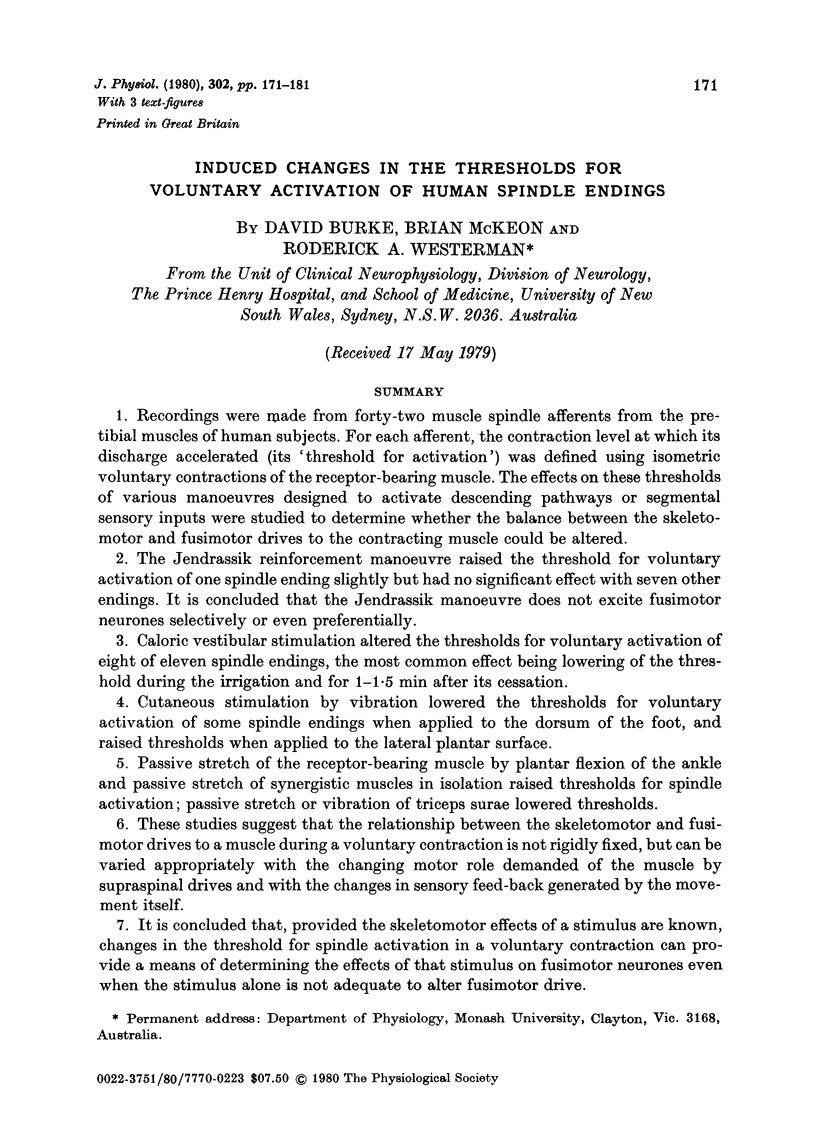
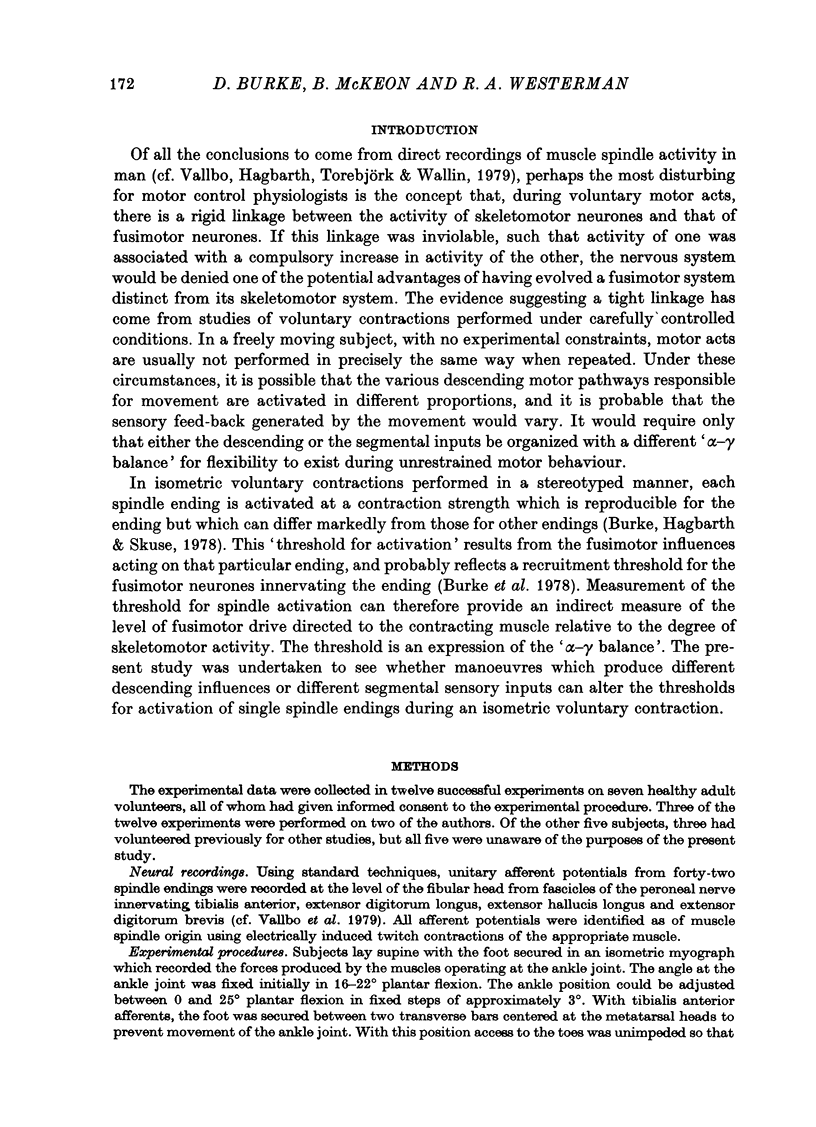
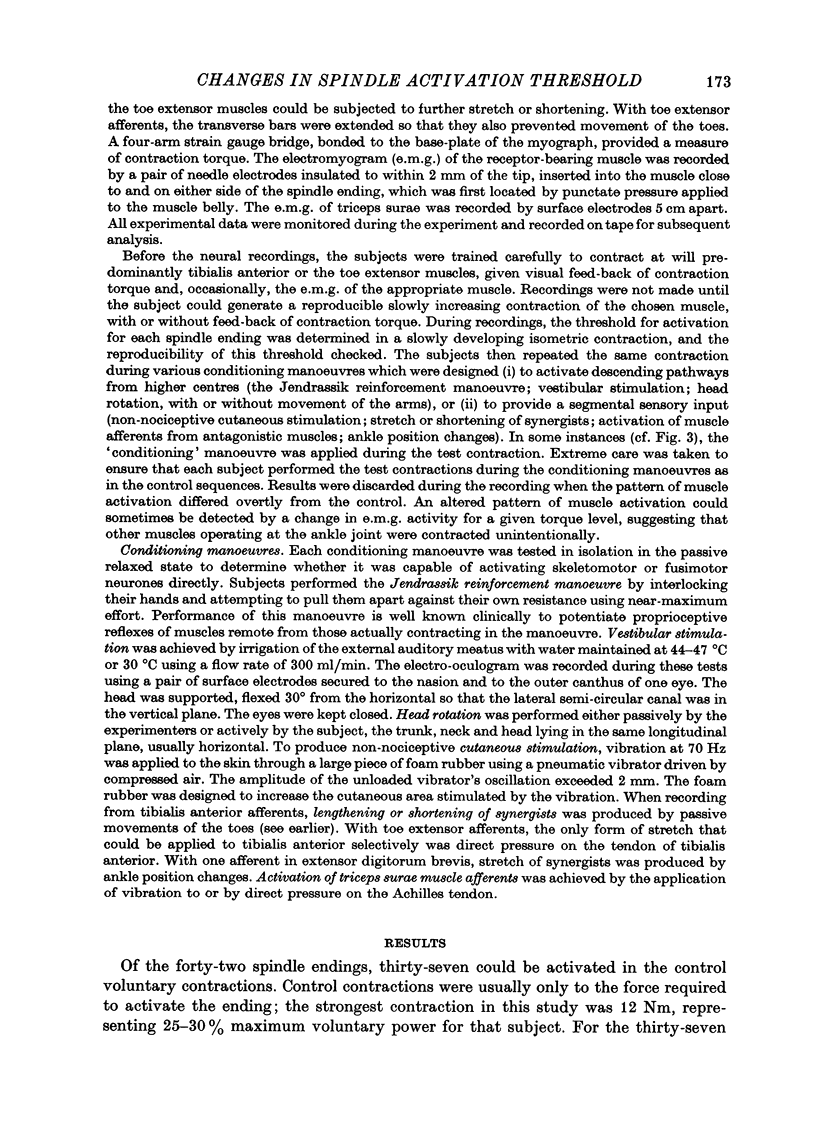
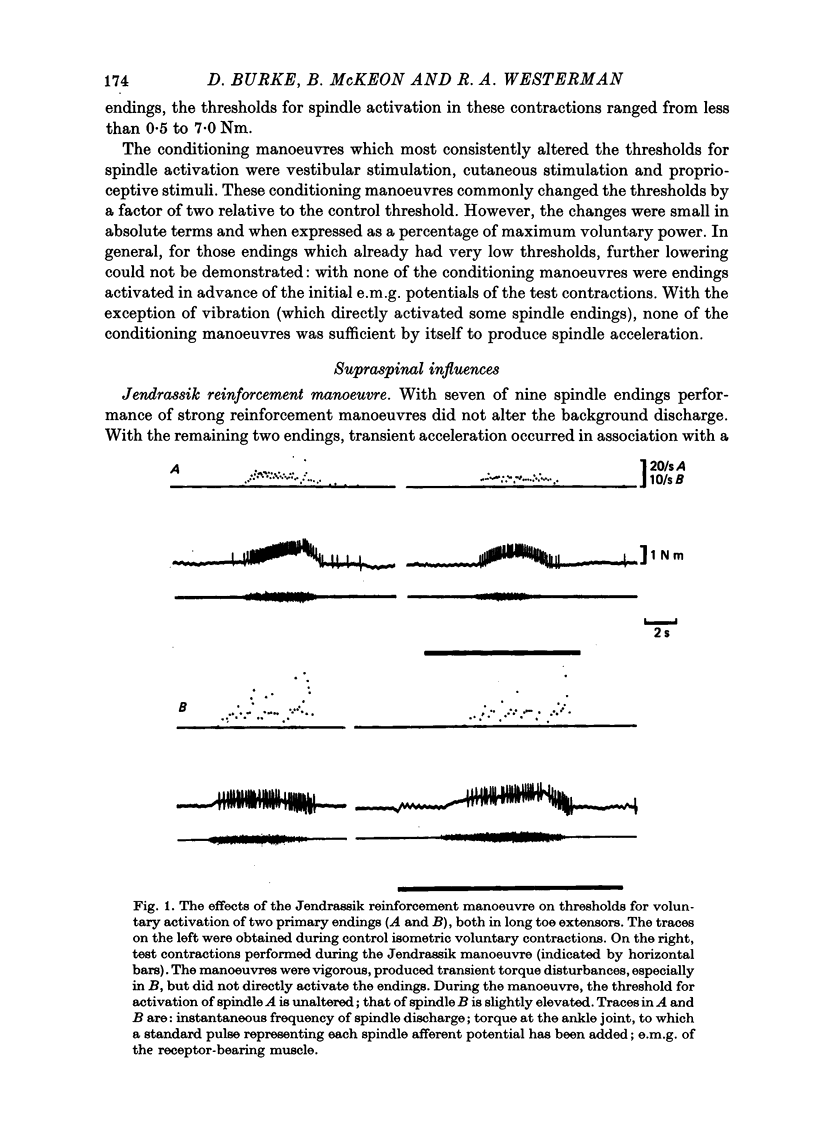
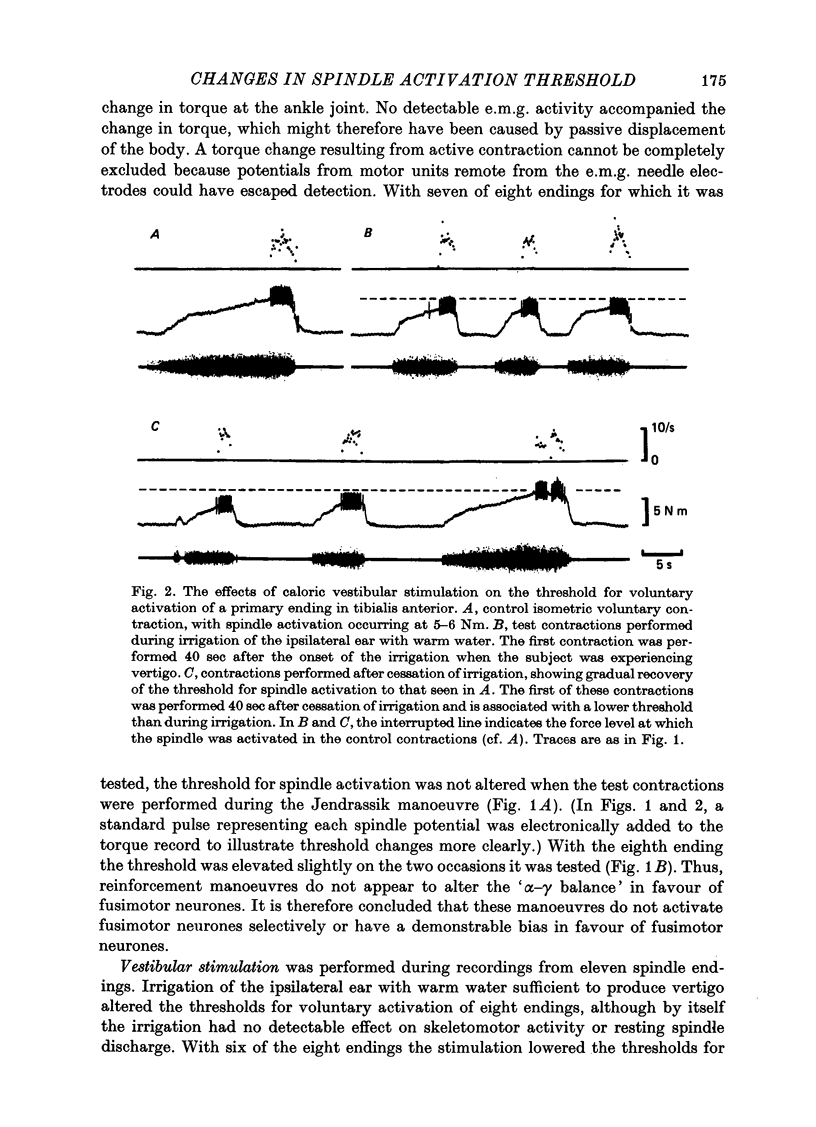
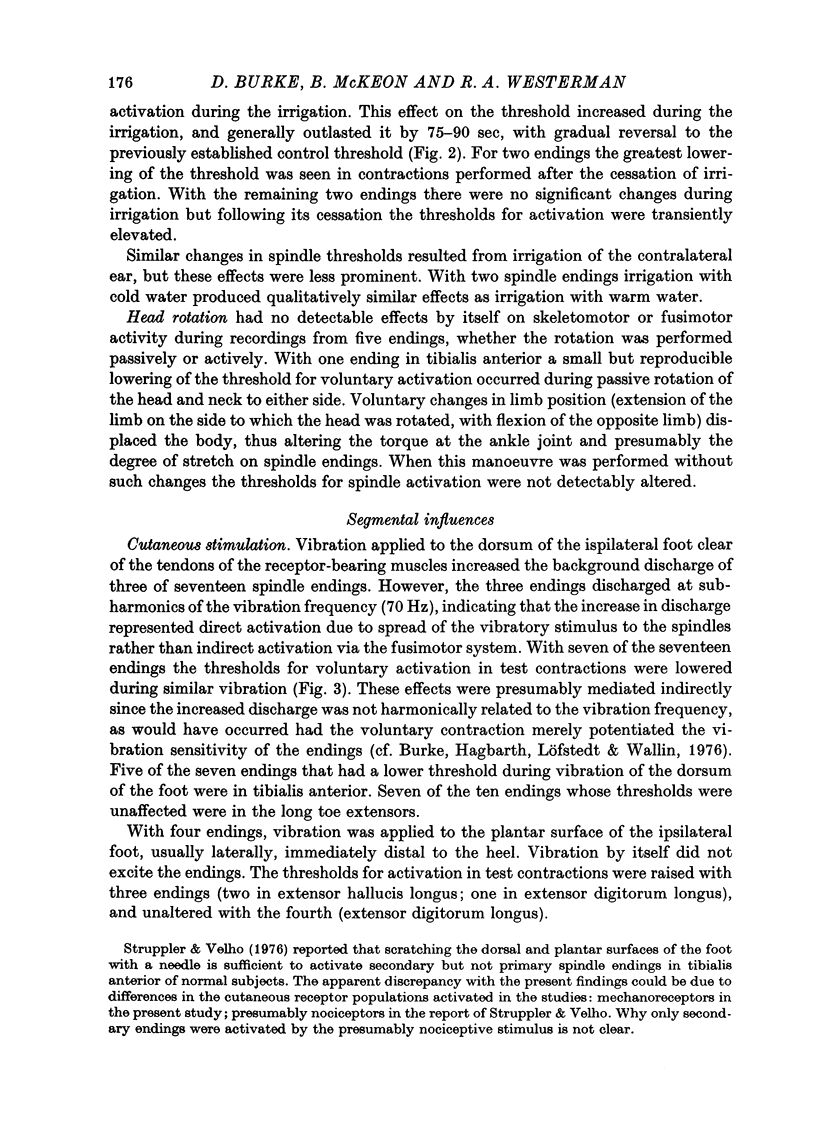
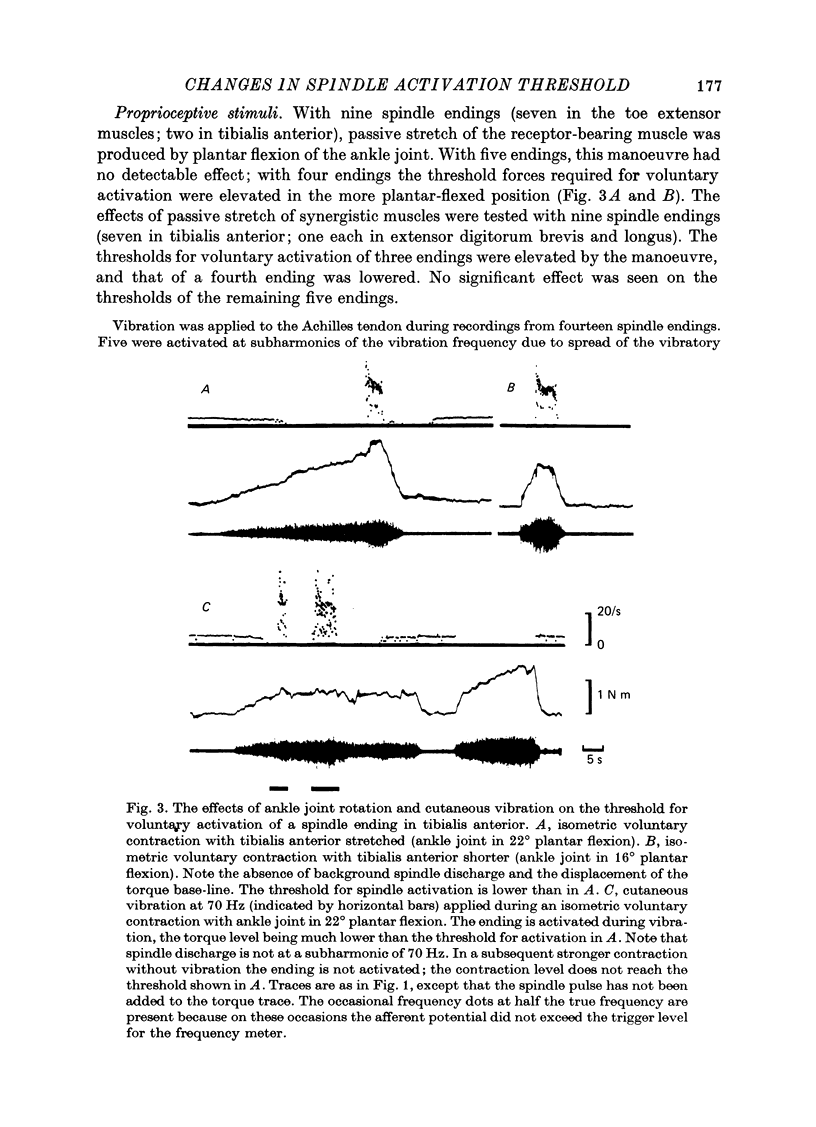
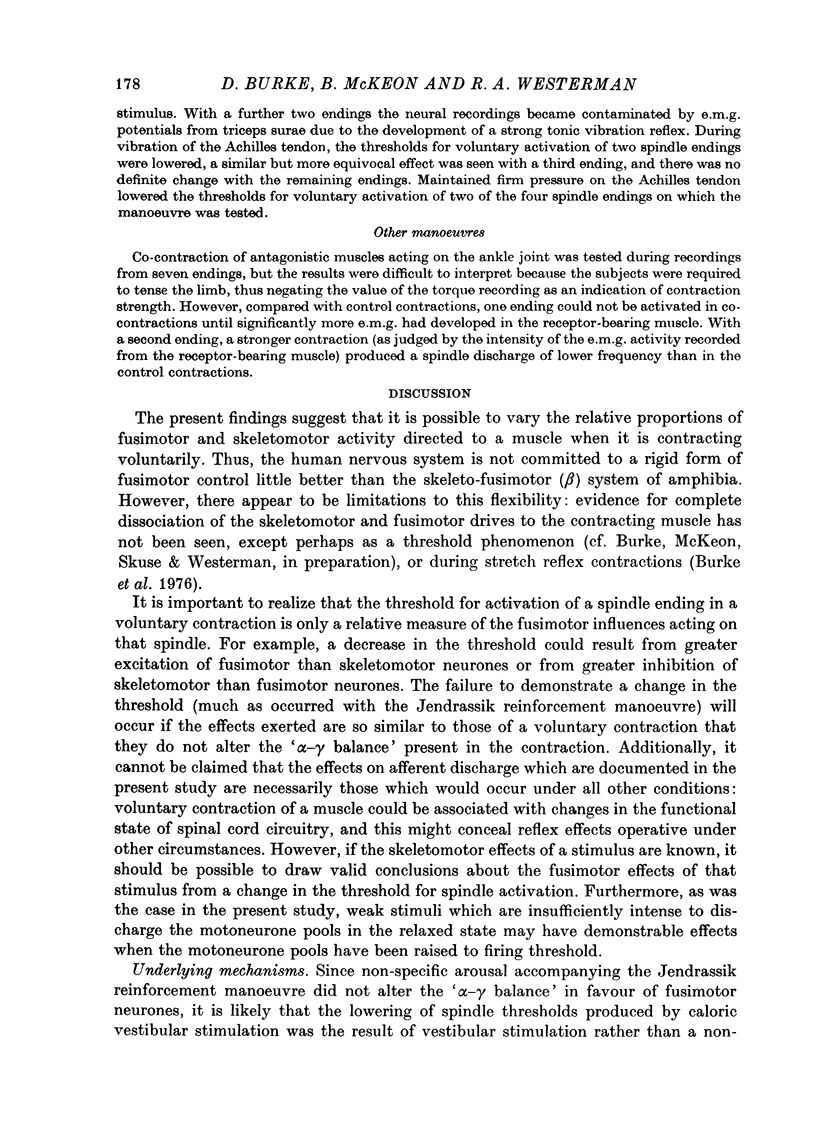
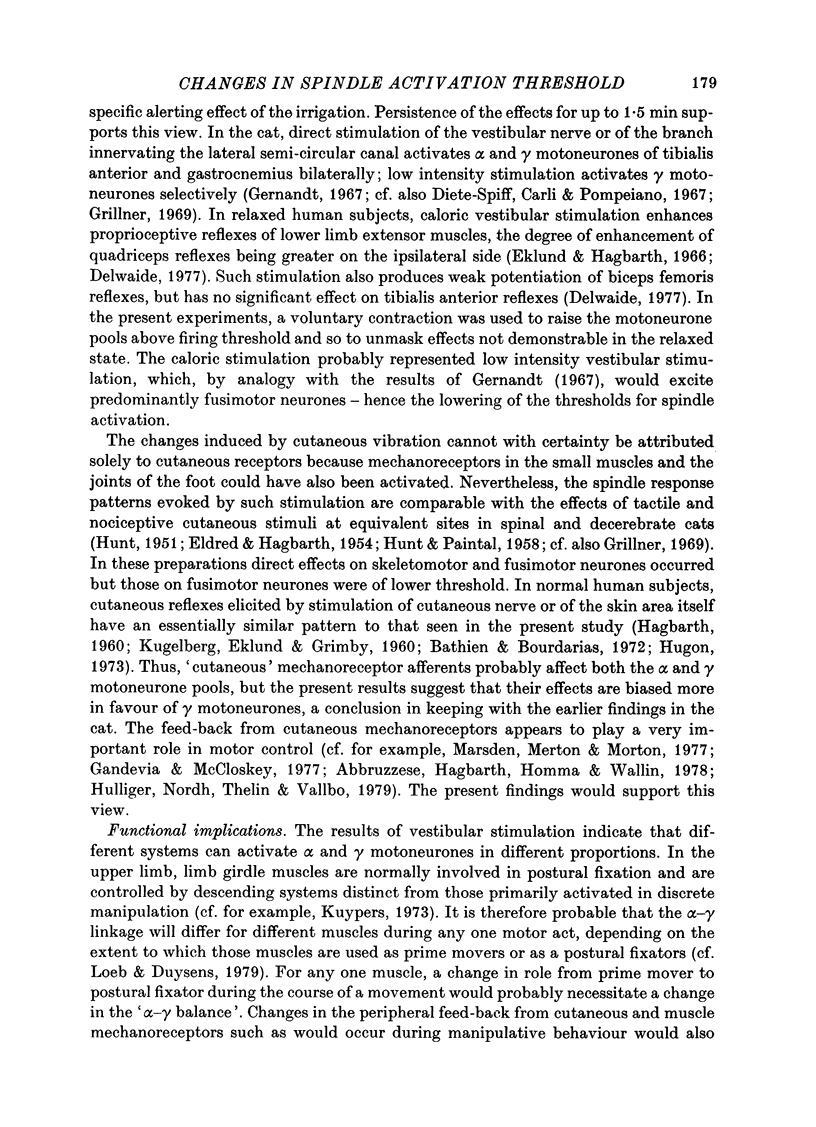
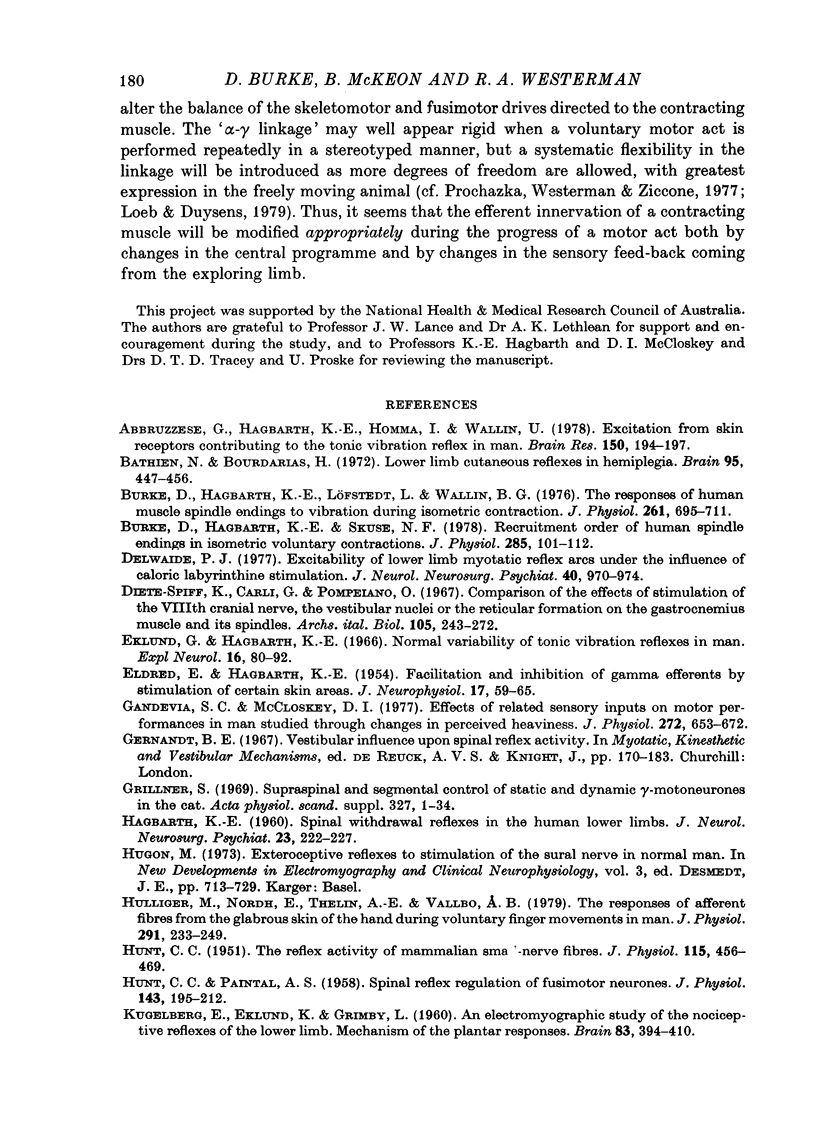

Selected References
These references are in PubMed. This may not be the complete list of references from this article.
- Abbruzzese G., Hagbarth K. E., Homma I., Wallin U. Excitation from skin receptors contributing to the tonic vibration reflex in man. Brain Res. 1978 Jul 7;150(1):194–197. doi: 10.1016/0006-8993(78)90665-0. [DOI] [PubMed] [Google Scholar]
- Bathien N., Bourdarias H. Lower limb cutaneous reflexes in hemiplegia. Brain. 1972;95(3):447–456. doi: 10.1093/brain/95.2.447. [DOI] [PubMed] [Google Scholar]
- Burke D., Hagbarth K. E., Löfstedt L., Wallin B. G. The responses of human muscle spindle endings to vibration during isometric contraction. J Physiol. 1976 Oct;261(3):695–711. doi: 10.1113/jphysiol.1976.sp011581. [DOI] [PMC free article] [PubMed] [Google Scholar]
- Burke D., Hagbarth K. E., Skuse N. F. Recruitment order of human spindle endings in isometric voluntary contractions. J Physiol. 1978 Dec;285:101–112. doi: 10.1113/jphysiol.1978.sp012560. [DOI] [PMC free article] [PubMed] [Google Scholar]
- Delwaide P. J. Excitability of lower limb myotatic reflex arcs under the influence of caloric labyrinthine stimulation. Analysis of the postural effects in man. J Neurol Neurosurg Psychiatry. 1977 Oct;40(10):970–974. doi: 10.1136/jnnp.40.10.970. [DOI] [PMC free article] [PubMed] [Google Scholar]
- Diete-Spiff K., Carli G., Pompeiano O. Comparison of the effects of stimulation of the 8th cranial nerve, the vestibular nuclei or the reticular formation on the gastrocnemius muscle and its spindles. Arch Ital Biol. 1967 Jun;105(2):243–272. [PubMed] [Google Scholar]
- ELDRED E., HAGBARTH K. E. Facilitation and inhibition of gamma efferents by stimulation of certain skin areas. J Neurophysiol. 1954 Jan;17(1):59–65. doi: 10.1152/jn.1954.17.1.59. [DOI] [PubMed] [Google Scholar]
- Eklund G., Hagbarth K. E. Normal variability of tonic vibration reflexes in man. Exp Neurol. 1966 Sep;16(1):80–92. doi: 10.1016/0014-4886(66)90088-4. [DOI] [PubMed] [Google Scholar]
- Gandevia S. C., McCloskey D. I. Effects of related sensory inputs on motor performances in man studied through changes in perceived heaviness. J Physiol. 1977 Nov;272(3):653–672. doi: 10.1113/jphysiol.1977.sp012065. [DOI] [PMC free article] [PubMed] [Google Scholar]
- Grillner S. Supraspinal and segmental control of static and dynamic gamma-motoneurones in the cat. Acta Physiol Scand Suppl. 1969;327:1–34. [PubMed] [Google Scholar]
- HAGBARTH K. E. Spinal withdrawal reflexes in the human lower limbs. J Neurol Neurosurg Psychiatry. 1960 Aug;23:222–227. doi: 10.1136/jnnp.23.3.222. [DOI] [PMC free article] [PubMed] [Google Scholar]
- HUNT C. C., PAINTAL A. S. Spinal reflex regulation of fusimotor neurones. J Physiol. 1958 Sep 23;143(2):195–212. doi: 10.1113/jphysiol.1958.sp006053. [DOI] [PMC free article] [PubMed] [Google Scholar]
- HUNT C. C. The reflex activity of mammalian small-nerve fibres. J Physiol. 1951 Dec 28;115(4):456–469. doi: 10.1113/jphysiol.1951.sp004681. [DOI] [PMC free article] [PubMed] [Google Scholar]
- Hulliger M., Nordh E., Thelin A. E., Vallbo A. B. The responses of afferent fibres from the glabrous skin of the hand during voluntary finger movements in man. J Physiol. 1979 Jun;291:233–249. doi: 10.1113/jphysiol.1979.sp012809. [DOI] [PMC free article] [PubMed] [Google Scholar]
- KUGELBERG E., EKLUND K., GRIMBY L. An electromyographic study of the nociceptive reflexes of the lower limb. Mechanism of the plantar responses. Brain. 1960 Sep;83:394–410. doi: 10.1093/brain/83.3.394. [DOI] [PubMed] [Google Scholar]
- Loeb G. E., Duysens J. Activity patterns in individual hindlimb primary and secondary muscle spindle afferents during normal movements in unrestrained cats. J Neurophysiol. 1979 Mar;42(2):420–440. doi: 10.1152/jn.1979.42.2.420. [DOI] [PubMed] [Google Scholar]
- Marsden C. D., Merton P. A., Morton H. B. The sensory mechanism of servo action in human muscle. J Physiol. 1977 Feb;265(2):521–535. doi: 10.1113/jphysiol.1977.sp011728. [DOI] [PMC free article] [PubMed] [Google Scholar]
- Prochazka A., Westerman R. A., Ziccone S. P. Ia afferent activity during a variety of voluntary movements in the cat. J Physiol. 1977 Jun;268(2):423–448. doi: 10.1113/jphysiol.1977.sp011864. [DOI] [PMC free article] [PubMed] [Google Scholar]


